Best Ingredients to Avoid in Small Breed Dog Food
Introduction
Choosing the right Small Breed Dog Food is one of the most important decisions you’ll ever make for your furry friend. Unlike larger dogs, small breeds have faster metabolisms, smaller stomachs, and unique nutritional needs. While high-quality nutrition can boost their energy, coat, and lifespan, the wrong ingredients can lead to obesity, allergies, digestive issues, and even long-term health risks.
Unfortunately, many commercial dog food brands still rely on cheap fillers, harmful preservatives, artificial colors, and low-quality meat by-products. These ingredients may cut costs for manufacturers but can silently harm your dog’s health.
In this guide, we’ll explore the worst ingredients in Small Breed Dog Food that you must avoid, how they impact your pet’s well-being, and what healthier alternatives exist. Along the way, we’ll add comparison tables, expert-backed points, and references to related blogs such as Healthy Vegetables for Dogs and Best Natural Dog Food Brands.
Why Ingredient Quality Matters in Small Breed Dog Food
Small dogs may look tiny, but their nutrition requirements are actually more complex than larger breeds.
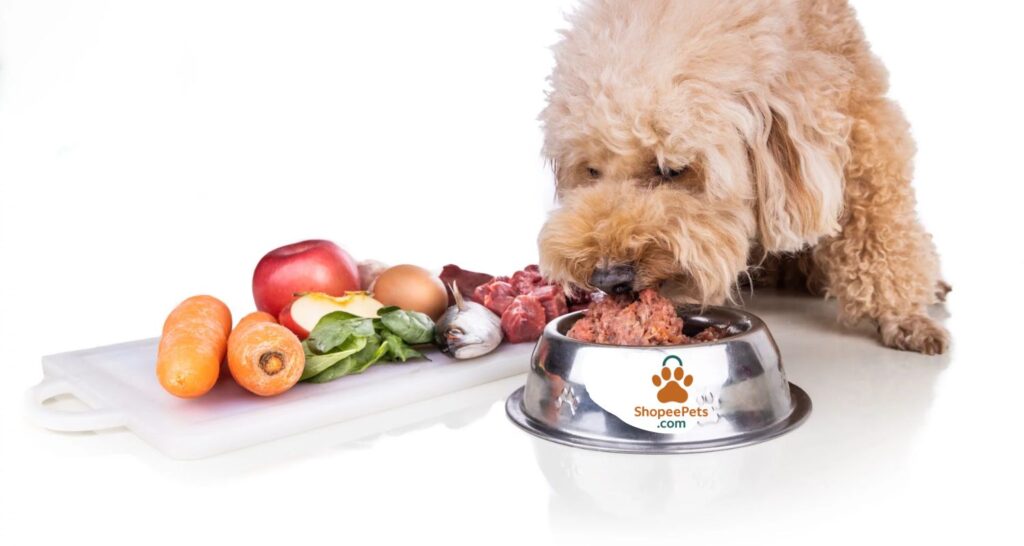
Small Breeds Have Higher Metabolism
Because of their size, small dogs burn calories faster than bigger breeds. Feeding them Small Breed Dog Food loaded with fillers like corn, soy, or wheat means they’ll get quick energy spikes but no long-term nutrition. Over time, this can cause weight gain, diabetes, and even heart issues.
👉 Example: A Chihuahua eating low-quality kibble with corn syrup or caramel coloring may show hyperactivity at first but soon experience blood sugar crashes.
Small Stomachs = Less Tolerance for Junk
Since small breeds eat smaller portions, every bite of Small Breed Dog Food must count. If that bite is packed with preservatives like BHA, BHT, or ethoxyquin, the toxic load per serving is much higher compared to larger dogs. This makes ingredient quality absolutely critical.
Common Harmful Ingredients in Small Breed Dog Food
Let’s break down the most common harmful ingredients found in commercial dog food.
Meat By-Products & Animal Rendering Plants
- Includes hooves, beaks, roadkill, and diseased animals processed into “meat meal.”
- Low in real protein, hard to digest.
- May contain harmful bacteria or toxins.
Fresh Meat vs Meat By-Products in Small Breed Dog Food
| Ingredient | Quality | Digestibility | Health Risks |
|---|---|---|---|
| Fresh chicken, beef, salmon | High | Easy | Supports muscles & coat health |
| Meat by-products (unnamed) | Low | Poor | Risk of toxins, allergies |
| Rendered fat | Very Low | Difficult | Obesity, pancreatitis |
💡 Better Choice: Look for named meats (chicken, lamb, salmon) in your Small Breed Dog Food rather than vague terms like “meat meal” or “animal digest.”
Artificial Colors & Food Dyes (Red 40, Yellow 5, Caramel Color)
Artificial colors are added to dog food purely for human appeal, not for dogs. In fact, dogs see colors differently and don’t care about bright kibble.
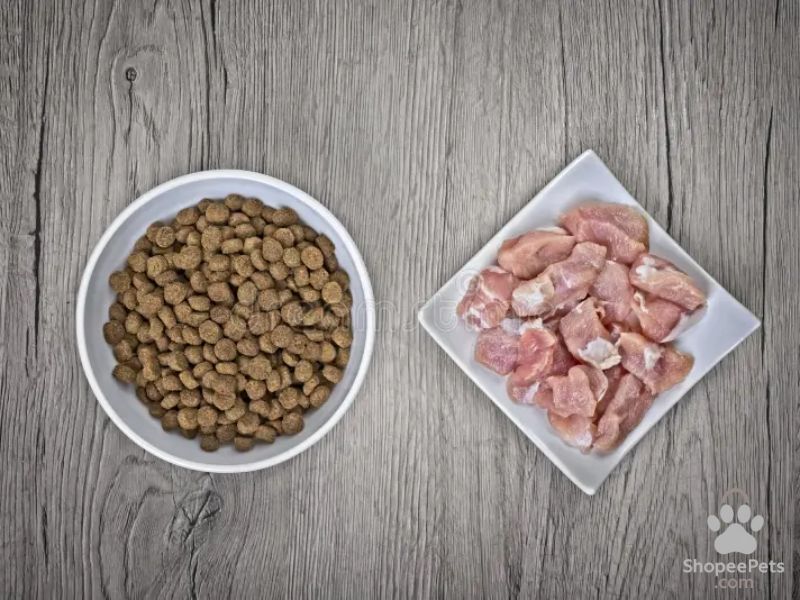
- Linked to hyperactivity, allergies, and cancer risks.
- Red 40, Yellow 5, and caramel coloring are the most concerning.
Risks of Artificial Colors in Small Breed Dog Food
- Hyperactivity and restlessness
- Skin allergies and itchy paws
- Long-term cancer risks
- No nutritional benefit
Artificial Flavors & Sweeteners (MSG, Corn Syrup, Xylitol)
To make low-quality kibble appealing, many brands add artificial flavors and sweeteners.
- MSG hides poor-quality protein.
- Corn syrup and molasses lead to obesity and diabetes.
- Xylitol is highly toxic and can cause seizures or liver failure.
Natural Flavors vs Artificial Flavors in Small Breed Dog Food
| Flavor Source | Safe/Unsafe | Notes |
|---|---|---|
| Chicken broth, salmon oil | Safe | Natural protein & omega-3s |
| MSG, bacon flavor | Unsafe | Triggers allergies, hides poor quality |
| Xylitol, sorbitol | Extremely Unsafe | Can be fatal to dogs |
💡 Tip: Instead of artificial flavors, choose Small Breed Dog Food enhanced with bone broth, real meat, or natural herbs.
Artificial Preservatives (BHA, BHT, Ethoxyquin)
Preservatives extend shelf life but harm your pet’s health.
- BHA & BHT → possible carcinogens (linked to cancer). .
- Ethoxyquin → banned in human food, still used in pet food.
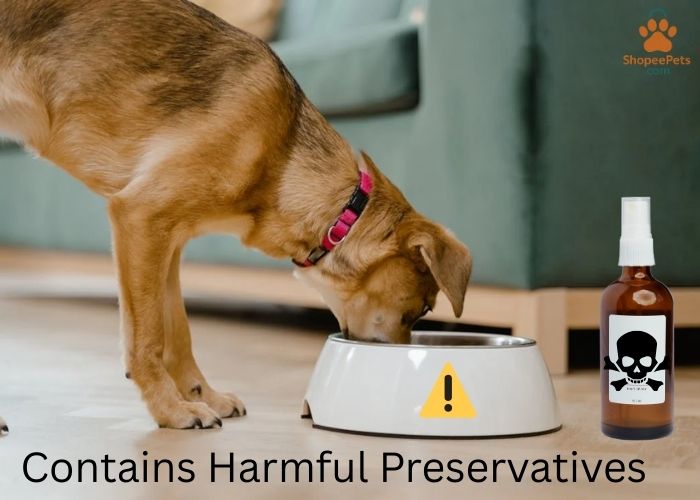
Dogs eating preservative-heavy Small Breed Dog Food may face liver stress, kidney damage, and weakened immunity.
Fillers & Low-Quality Grains (Corn, Wheat, Soy)
Fillers make kibble cheaper but offer no real nutrition.
- Cause bloating, gas, and food allergies.
- Linked to obesity and diabetes in small breeds.
- Poor protein sources → dogs don’t digest plant proteins well.
Healthy Carbs vs Fillers in Small Breed Dog Food
| Carbohydrate Source | Quality | Digestibility |
|---|---|---|
| Sweet potatoes, brown rice, quinoa | High | Easy |
| Corn, wheat, soy | Low | Poor |
💡 Instead of cheap fillers, choose brands using whole grains or sweet potatoes in their Small Breed Dog Food.
Health Risks of Bad Ingredients in Small Breed Dog Food
Obesity & Diabetes
Fillers, sugar, and corn syrup create unnecessary calories. Since small dogs don’t burn them off easily, obesity becomes a major risk.
Allergies & Skin Problems
Artificial colors, MSG, and soy can trigger chronic itching, ear infections, and digestive upset.
Long-Term Organ Damage
Preservatives like ethoxyquin stress the liver and kidneys, reducing your small breed dog’s lifespan.
What to Look for Instead of Harmful Ingredients
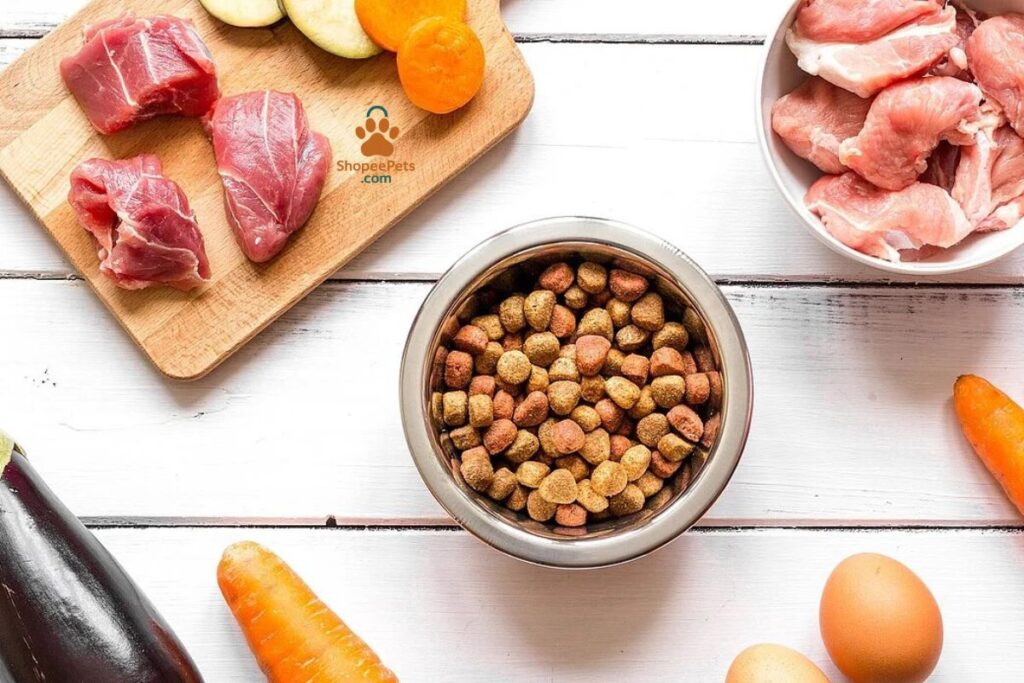
Now that you know which ingredients to avoid in Small Breed Dog Food, it’s equally important to understand what healthier options you should look for. A premium-quality recipe should balance protein, healthy fats, digestible carbs, vitamins, and minerals — all tailored for smaller dogs.
High-Quality Animal Proteins
The number one ingredient in Small Breed Dog Food should always be a named animal protein source like chicken, lamb, beef, or salmon.
Why It Matters:
- Supports muscle growth and repair.
- Provides essential amino acids not found in plant proteins.
- Easier for small dogs to digest.
👉 Example: A Pomeranian eating a diet with deboned chicken and salmon oil will maintain a shinier coat and stronger immune system compared to one eating pea protein or corn gluten.
Healthy Protein Sources to Choose:
- Chicken, turkey, lamb, beef
- Fish (salmon, whitefish, sardines)
- Eggs (great for digestibility and amino acids)
Natural Preservatives Over Artificial Ones
Artificial preservatives like BHA and ethoxyquin are dangerous in the long term. Instead, look for Small Breed Dog Food with natural preservation methods.
Safe Alternatives Include:
- Vitamin E (Mixed Tocopherols)
- Vitamin C (Ascorbic Acid)
- Rosemary Extract
- Green Tea Extract
💡 Pro Tip: These natural preservatives not only keep food fresh but also provide antioxidant benefits to your dog.
Wholesome Carbohydrates
Carbs aren’t the enemy, but the source matters. Instead of cheap fillers, Small Breed Dog Food should use carbs that are nutrient-rich and easily digestible.
✅ Good Options:
- Sweet potatoes
- Brown rice
- Quinoa
- Barley
- Oats
❌ Avoid:
- Corn
- Soy
- White flour
- By-product starches
Healthy Fats for Energy and Skin Health
Small breeds burn calories quickly, so they need healthy fats to sustain energy and promote coat health.
Best Fat Sources in Small Breed Dog Food:
- Salmon oil (rich in Omega-3)
- Chicken fat
- Flaxseed oil
- Coconut oil
These fats don’t just provide energy — they also reduce inflammation, boost cognitive function, and improve skin elasticity.
Essential Nutrients Small Breed Dogs Need
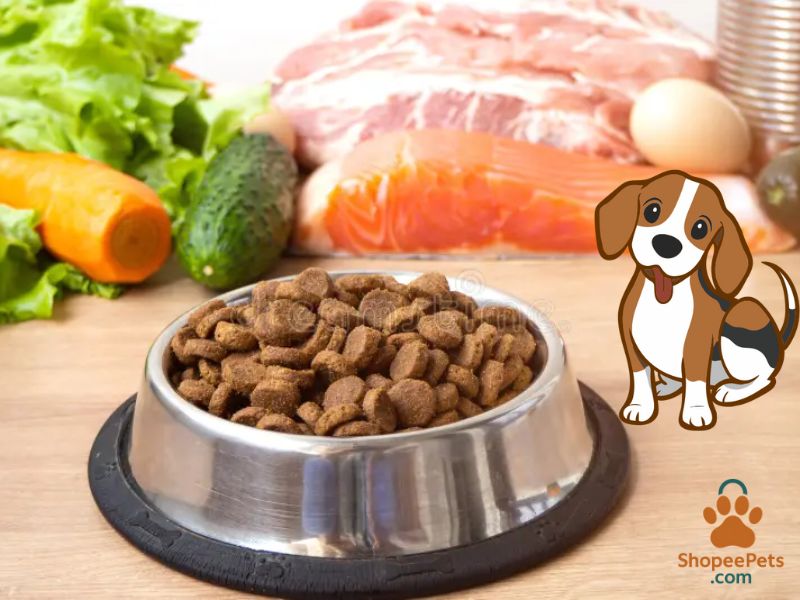
Vitamins & Minerals
Small breed dogs need more concentrated nutrition in smaller portions. Look for:
- Calcium & Phosphorus → bone strength
- Zinc & Biotin → healthy coat
- Vitamin A & E → eye and immune health
- Taurine & L-Carnitine → heart health
Fiber for Digestion
Good Small Breed Dog Food should contain natural fiber to support digestion and prevent constipation.
✅ Healthy Fiber Sources:
- Pumpkin
- Beet pulp (in small amounts)
- Apples & blueberries
- Carrots
Probiotics & Prebiotics
Since small breeds are prone to sensitive stomachs, probiotics and prebiotics are excellent additions. They improve gut flora and nutrient absorption.
👉 Example: Brands like Orijen and Wellness Core often include probiotics in their Small Breed Dog Food formulas.
Healthy Ingredient Swaps in Small Breed Dog Food
Healthy Alternatives to Harmful Dog Food Ingredients
| Harmful Ingredient | Why It’s Bad | Healthy Alternative |
|---|---|---|
| Meat By-products | Low protein, toxins | Deboned chicken, lamb, salmon |
| Artificial Colors | Allergies, cancer risk | Natural turmeric, beetroot |
| MSG & Flavors | Hides poor quality | Chicken broth, herbs |
| Corn & Soy | Allergies, bloating | Brown rice, sweet potato |
| BHA/BHT | Carcinogenic | Vitamin E, rosemary extract |
💡 By choosing the right swaps, you ensure your Small Breed Dog Food provides nutrition without hidden dangers.
Comparing Protein Sources in Small Breed Dog Food
Animal Protein vs Plant Protein for Small Dogs
| Protein Source | Digestibility | Amino Acid Profile | Suitability |
|---|---|---|---|
| Chicken | High | Complete | Excellent for small breeds |
| Salmon | High | Complete | Great for coat & skin health |
| Eggs | Very High | Complete | Best digestibility |
| Pea Protein | Medium | Incomplete | Poor substitute |
| Soy Protein | Low | Incomplete | Triggers allergies |
👉 Key Takeaway: Always choose animal-based protein over plant-based fillers in Small Breed Dog Food.
Fresh vs Processed Dog Food Ingredients
Fresh Ingredients
- Real meat, vegetables, and fruits
- Minimal processing = higher nutrient retention
- Better taste and smell for picky eaters
Processed Ingredients
- Rendered fats, meat meals, by-products
- High heat destroys nutrients
- Often need artificial enhancers to taste good
Fresh vs Processed Dog Food
| Type | Pros | Cons |
|---|---|---|
| Fresh Ingredients | Nutrient-rich, tasty, safe | Shorter shelf life |
| Processed Ingredients | Long shelf life, cheap | Poor nutrition, harmful additives |
Signs You’re Feeding the Right Small Breed Dog Food
If you’ve successfully chosen food with safe, high-quality ingredients, you’ll notice the difference in your dog’s overall health.
Positive Signs:
- Shiny coat and healthy skin
- Stable energy levels (no hyperactive spikes)
- Regular, healthy stools
- Bright eyes and clean teeth
- Healthy weight maintenance
Negative Signs (if still eating harmful ingredients):
- Excessive scratching or hair loss
- Weight gain despite normal feeding
- Foul-smelling breath
- Digestive upset (gas, diarrhea, bloating)
Hidden Dangers in Commercial Dog Food
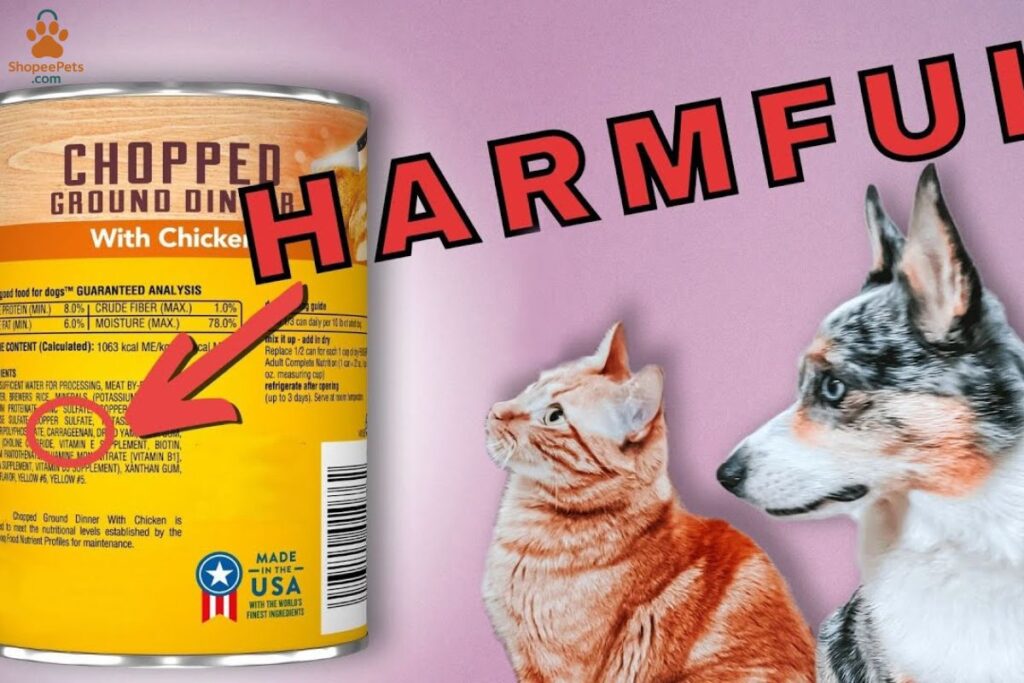
Not all harmful ingredients in Small Breed Dog Food are obvious. Some are hidden under technical names or vague descriptions that manufacturers use to confuse consumers. Knowing these terms will protect your dog from consuming low-quality, potentially harmful food.
MSG and Artificial Flavors
Monosodium Glutamate (MSG) is often disguised as “natural flavoring” or “yeast extract.” While it makes food taste better, it provides zero nutrition and may cause headaches, hyperactivity, or even allergic reactions in sensitive dogs.
Why It’s Dangerous in Small Breed Dog Food:
- Hides the poor quality of ingredients.
- Encourages overeating due to addictive flavor.
- May cause long-term health problems.
Healthy Alternative: Choose dog foods that use real meat broth, herbs, or natural flavors instead of chemical taste enhancers.
Common Allergens (Soy, Dairy, Eggs, Nuts, Sesame)
Small breed dogs often have sensitive stomachs. Unfortunately, allergens like soy, dairy, eggs, sesame, and nuts are sometimes added to recipes as protein substitutes.
Potential Health Issues:
- Itchy skin and hair loss
- Upset stomach, diarrhea, vomiting
- Long-term digestive disorders
✅ Safer Alternatives:
- Stick to grain-free, allergen-free formulas.
- Use animal proteins (chicken, fish, lamb) for protein.
- Carbohydrates like sweet potato or brown rice instead of soy or wheat.
Pea Protein – A Cheap Filler
Pea protein has become common in grain-free diets because it’s cheap and high in plant protein. But it’s not as beneficial as real meat.
Why to Avoid Pea Protein in Small Breed Dog Food:
- Incomplete amino acid profile → dogs don’t get full nutrition.
- May cause bloating and digestive upset.
- Linked to canine heart disease (DCM) when overused.
👉 Pro Tip: If pea protein is listed in the first 5–7 ingredients, it’s likely being used as a main protein source instead of meat.
Animal Digest
Animal digest is basically a chemically treated meat broth made from leftover scraps. It’s often sprayed on kibble to make it taste meaty.
Why It’s Problematic:
- Doesn’t provide real protein.
- Extremely processed.
- Covers up poor-quality ingredients.
Healthy Alternative → Dog food shouldn’t need flavor sprays if it already contains real chicken, beef, or salmon.
Comparing Premium vs Cheap Small Breed Dog Food Brands
Here’s how high-quality brands differ from budget options:
Premium vs Cheap Small Breed Dog Food
| Brand Type | Ingredients | Protein Source | Preservation | Price | Suitability |
|---|---|---|---|---|---|
| Premium (Orijen, Ziwi Peak, Fromm) | Human-grade meat, veggies, fruits | Deboned chicken, salmon, lamb | Natural (Vitamin E, rosemary) | Higher | Excellent for long-term health |
| Mid-range (Purina Pro Plan, Blue Buffalo) | Mix of quality proteins + some fillers | Chicken meal, fish | Natural + mild processing | Moderate | Good option with balance |
| Cheap (Grocery Store Brands, Generic) | By-products, corn, soy | Meat meal, pea protein | Artificial (BHA, BHT) | Low | Poor nutrition, short lifespan risk |
👉 Key Takeaway: While premium brands cost more, they reduce vet bills and improve quality of life for your dog.
Quick Checklist for Reading Dog Food Labels
Before buying Small Breed Dog Food, use this checklist to spot red flags:
✅ What to Look For:
- Named animal protein first (e.g., deboned chicken, salmon)
- Natural preservatives (Vitamin E, rosemary extract)
- Whole grains (oats, barley, brown rice) or healthy carbs (sweet potato, pumpkin)
- Probiotics and omega fatty acids
❌ What to Avoid:
- “Meat by-products” or vague protein labels
- Corn, soy, or wheat gluten
- Artificial colors, sweeteners, or flavors
- BHA, BHT, ethoxyquin
- “Animal digest” or MSG disguised as natural flavor
Case Study – Switching to Better Small Breed Dog Food
Meet Bella, a 5-year-old Shih Tzu who was eating grocery store kibble with by-products and artificial flavors. She had constant itching, dull fur, and frequent stomach issues.
After switching to a premium Small Breed Dog Food (with salmon, brown rice, and probiotics):
- Her coat became shiny within 6 weeks.
- Digestion improved (no more diarrhea).
- Energy levels became stable.
- Vet visits decreased drastically.
💡 Real-life examples like Bella’s show the long-term impact of ingredients on a dog’s overall health.
Why Small Breed Dogs Are More Sensitive to Ingredients
Smaller dogs often have faster metabolisms and smaller stomachs, meaning:
- They eat less food but need more concentrated nutrients.
- Harmful fillers affect them more severely.
- Poor nutrition shows up faster in their coat, skin, and behavior.
👉 That’s why choosing safe, premium ingredients in Small Breed Dog Food isn’t optional — it’s essential.
How to Transition to Better Dog Food Safely
Switching your dog’s food is not something you should do overnight. A sudden change can upset their stomach, especially in small breeds.
Step-by-Step Transition Plan:
- Day 1–3: 75% old food + 25% new food
- Day 4–6: 50% old food + 50% new food
- Day 7–9: 25% old food + 75% new food
- Day 10+: 100% new food
👉 Pro Tip: Always monitor for vomiting, diarrhea, or skin irritation when switching to new Small Breed Dog Food.
Portion Sizes for Small Breed Dogs
Feeding the right amount is just as important as choosing the right food. Small breeds can easily become overweight if overfed.
Recommended Daily Portions for Small Breeds
| Dog Weight | Daily Calories | Cup of Kibble Equivalent | Notes |
|---|---|---|---|
| 2–4 lbs | 140–200 kcal | ¼ – ½ cup | Ideal for teacup breeds |
| 5–7 lbs | 200–300 kcal | ½ – ¾ cup | Monitor treats carefully |
| 8–10 lbs | 300–450 kcal | ¾ – 1 cup | Add probiotics for digestion |
| 11–15 lbs | 450–600 kcal | 1 – 1 ¼ cups | Ensure daily exercise |
| 16–20 lbs | 600–800 kcal | 1 ¼ – 1 ½ cups | Best split into 2–3 meals |
⚡ Always follow your vet’s guidance for portion sizes since activity levels vary.
Top Healthy Ingredients to Look For
When buying Small Breed Dog Food, don’t just avoid harmful ingredients — look for these beneficial ones:
✅ Proteins: Deboned chicken, turkey, salmon, lamb, duck
✅ Carbs: Sweet potato, brown rice, oats, barley
✅ Healthy Fats: Salmon oil, flaxseed, chicken fat (preserved naturally)
✅ Fruits & Veggies: Blueberries, spinach, carrots, pumpkin
✅ Supplements: Glucosamine, chondroitin (for joints), probiotics (for gut health)
Small Breed Dog Food – Do’s and Don’ts
✅ Do’s:
- Read labels carefully (first 5 ingredients matter most).
- Choose small kibble sizes for easier chewing.
- Look for AAFCO-approved foods that meet nutritional standards.
- Rotate proteins occasionally to avoid allergies.
❌ Don’ts:
- Don’t fall for vague terms like “meat meal” or “animal digest.”
- Don’t rely on treats for daily nutrition.
- Don’t feed human junk food (onions, chocolate, grapes are toxic).
- Don’t choose food just because it’s cheap.
Sample Feeding Plan for a Small Breed Dog
Example Daily Meal Plan for a 10 lb Dog
| Meal Time | Food Type | Portion | Notes |
|---|---|---|---|
| Morning | Premium kibble (chicken + rice) | ½ cup | Add a teaspoon of salmon oil |
| Noon | Small snack (freeze-dried meat treat) | 1–2 pieces | Avoid overfeeding |
| Evening | Wet food topper (beef + veggies) | ¼ cup | Mix with kibble for flavor |
| Before Bed | Dental chew | 1 small piece | Helps clean teeth |
👉 This type of plan ensures balanced protein, healthy carbs, and fat.
Signs You Need to Change Your Dog’s Food
Not all dog foods will suit your pup, even if they are premium. Watch for these warning signs:
- Persistent itching or skin redness
- Dull coat and shedding
- Bad breath or excessive gas
- Irregular stools (diarrhea/constipation)
- Low energy or fatigue
- Frequent ear infections
If you notice these, consult your vet and try another brand of Small Breed Dog Food.
Vet-Recommended Brands for Small Breed Dogs
Based on nutrition, safety, and quality, here are some brands vets often recommend:
- Orijen Small Breed – grain-free, high in protein
- Wellness Core Small Breed – rich in probiotics and antioxidants
- Blue Buffalo Life Protection Small Breed – affordable + natural ingredients
- Royal Canin Small Breed Adult – breed-specific formulas
- Ziwi Peak Air-Dried – minimally processed, human-grade
Final Thoughts – Choosing the Best for Your Dog
At the end of the day, your dog’s health depends on the choices you make at the store. Cheap fillers, artificial flavors, and vague labels may save money now, but they lead to health problems and expensive vet bills later.
Instead, prioritize:
- Named meat proteins over by-products.
- Natural preservatives over chemicals.
- Whole grains and veggies over corn and soy.
- Human-grade brands whenever possible.
Quick Recap:
- Avoid 24 harmful ingredients (like BHA, BHT, MSG, by-products, corn, soy).
- Choose foods with real meat + whole foods.
- Watch portion sizes to avoid obesity.
- Transition slowly to prevent stomach upset.
👉 Your small breed deserves the best nutrition to stay healthy, active, and happy for years to come.
🔑 Meta Description
Not all Small Breed Dog Food is safe. Find out 24 harmful ingredients you must avoid to protect your dog’s health and choose the best nutrition.
FAQs
What’s the healthiest dog food for small breeds?
The healthiest Small Breed Dog Food is one that uses real meat (like chicken, turkey, or salmon) as the first ingredient, contains wholesome carbs like brown rice or sweet potatoes, and uses natural preservatives such as Vitamin E. Avoid fillers, artificial colors, and chemical preservatives for long-term health.
What ingredient is bad in dry dog food?
One of the worst ingredients in dry Small Breed Dog Food is meat by-products and artificial preservatives (BHA, BHT, Ethoxyquin). These low-quality ingredients can cause allergies, digestive problems, and long-term health risks. Always read labels to avoid fillers like corn syrup, soy, and rendered fat.
What is the 90/10 rule for dogs?
The 90/10 rule means 90% of your dog’s daily calories should come from a balanced, complete dog food while 10% can come from healthy treats. This helps small breeds avoid obesity and ensures their nutritional needs are properly met.
What should be the number one ingredient in dog food?
The number one ingredient in any Small Breed Dog Food should be high-quality, named meat (like chicken, lamb, beef, or salmon). Whole meats provide the protein and amino acids dogs need to stay strong, active, and healthy.
What should a small dog eat per day?
A small dog should eat high-quality Small Breed Dog Food divided into 2–3 small meals per day. The exact amount depends on their weight, age, and activity level, but on average, 30–40 calories per pound of body weight is recommended. Always check the feeding guide on the food bag and adjust based on your dog’s needs.
Is Nutrish a good dog food?
Rachael Ray Nutrish is a mid-range dog food brand. While it contains real meat and some natural ingredients, certain recipes include fillers like corn, soy, or by-products that aren’t ideal for Small Breed Dog Food. For better long-term health, premium brands with human-grade ingredients are usually a safer choice.
Does small breed dog food matter?
Yes, small breed dog food matters because it is specially formulated with smaller kibble size, higher calorie density, and balanced nutrients to meet the fast metabolism and unique needs of small dogs. Feeding the right formula supports digestion, dental health, and energy levels in small breeds.


Naeem – Founder, ShopeePets
Helping pet lovers choose the best with honest product reviews, practical advice, and trusted guidance for every pet owner.
Visit ShopeePets.com →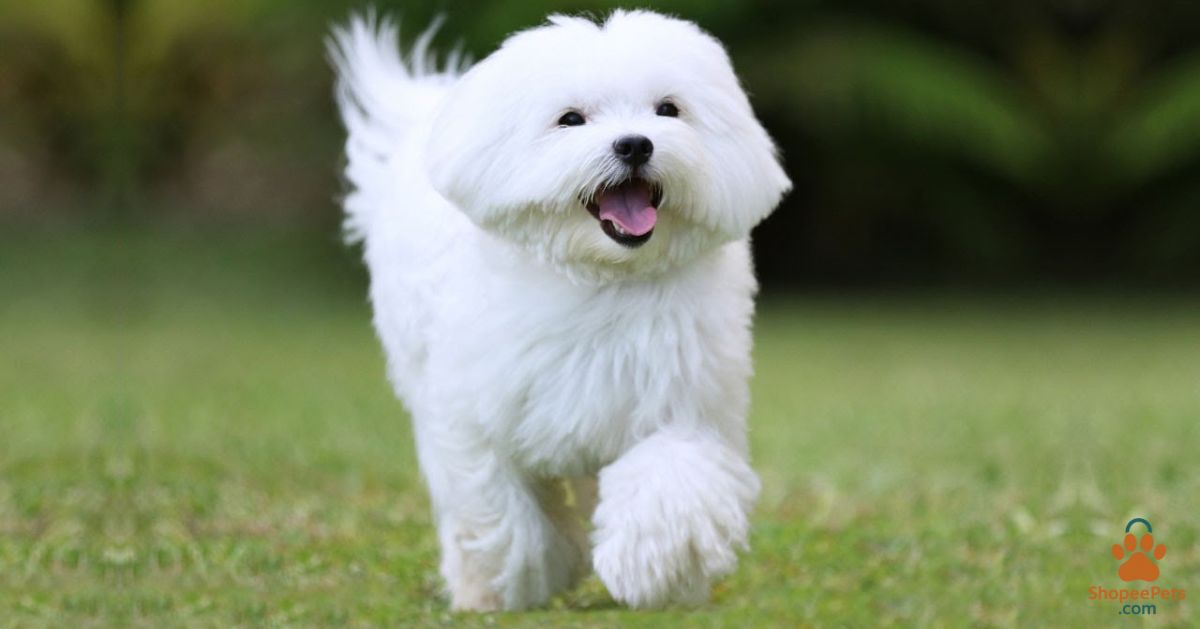

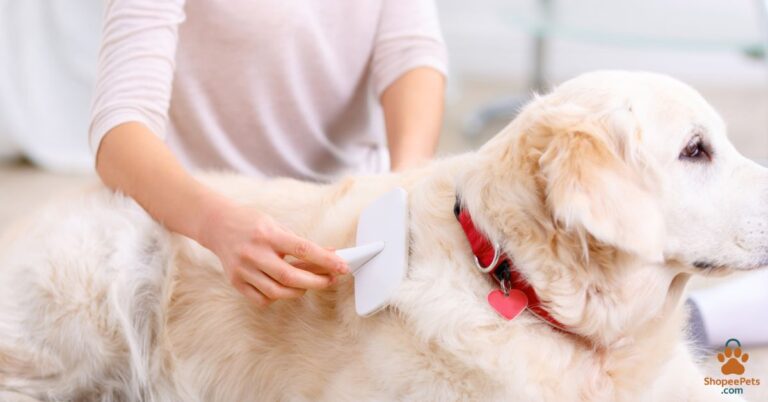
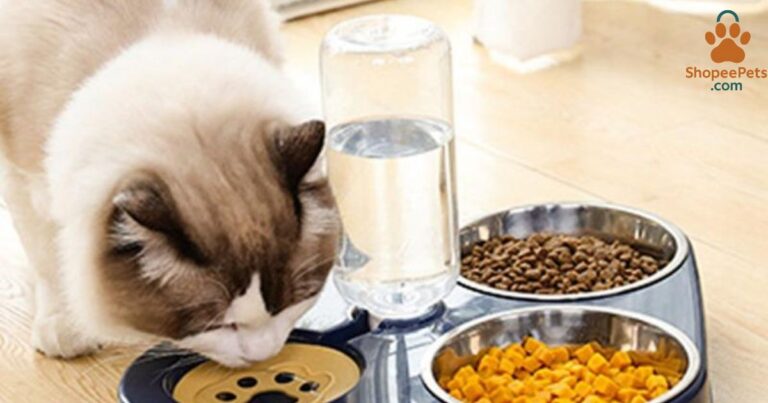
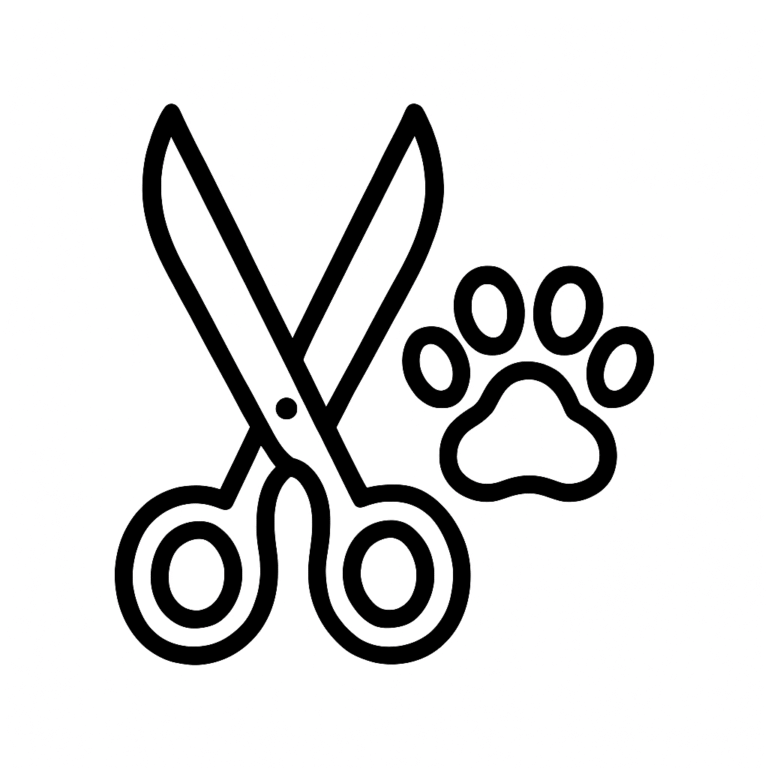


You have beautiful way of making complex emotions feel normal and valid